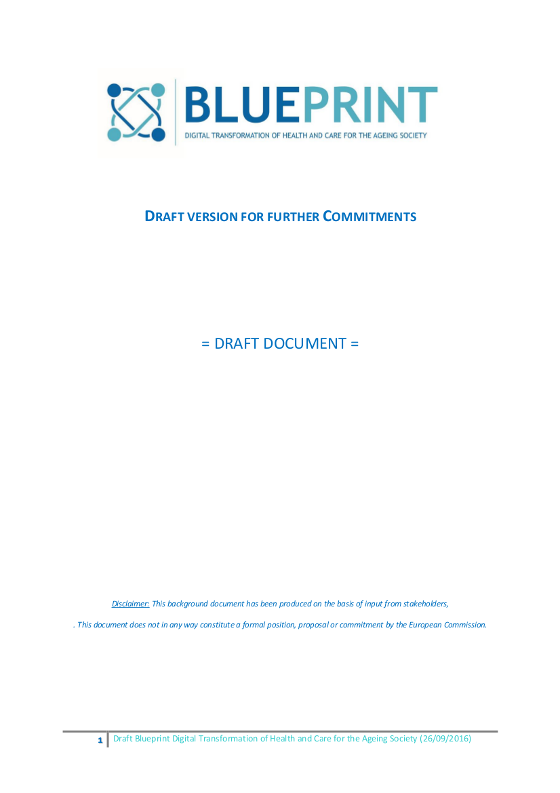 In December 2015 at the 4th Conference of Partners of the European Innovation Partnership on Active and Healthy Ageing (EIP on AHA), European Commissioner Günther Oettinger (Digital Economy and Society) outlined how digital innovation, enabled by a functioning Digital Single Market, can help transform demographic change into an opportunity for Europe's economy and society.
In December 2015 at the 4th Conference of Partners of the European Innovation Partnership on Active and Healthy Ageing (EIP on AHA), European Commissioner Günther Oettinger (Digital Economy and Society) outlined how digital innovation, enabled by a functioning Digital Single Market, can help transform demographic change into an opportunity for Europe's economy and society.
Commissioner Oettinger invited all stakeholders to work together with the European Commission in the development of a blueprint; a "shared vision" mobilizing the major public/private sector activities and committing investments towards a large scale showcase on how innovation enabled by a Digital Single Market can transform health and care provision and contribute to the European Silver Economy.
Recognising that a shared vision is essential to mobilise investment and guarantee the commitment of all actors to this digital transformation of health and care for the ageing society, a number of industrial players, regional authorities, professional organisations and multistakeholder platforms such as the EIP on AHA have accepted the invitation from Commissioner Oettinger and have produced an initial draft of this blueprint that was presented at the AAL FORUM 2016. It is available for further comments and commitments.
This final blueprint and shared stakeholder vision will be discussed at the second European Summit on Innovation for Active and Healthy Ageing (5-8 December 2016). This flagship event is organised by the European Commission in partnership with the European Parliament and the Committee of the Regions. It will bring together over 1500 participants engaged in developing, investing in and deploying digital innovation for active and healthy ageing.
Download: Draft Blueprint Digital Transformation of Health and Care for the Ageing Society (1.205 KB).
Download from eHealthNews.eu: Draft Blueprint Digital Transformation of Health and Care for the Ageing Society (1.205 KB).